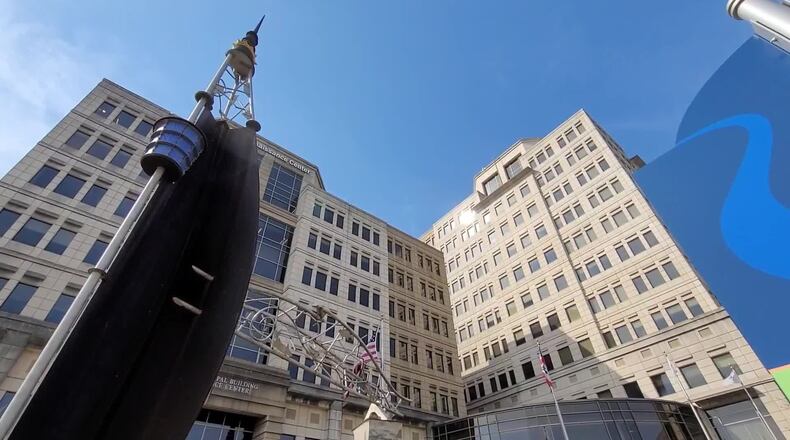The first wave of money arrived last year in the form of Coronavirus Aid, Relief, and Economic Security Act funding; the commissioners received $18.7 million. These funds were very restricted both in their use and deadlines to spend the money but the U.S. Treasury changed guidelines and due dates several times.
Over the past two years the county spent $5.6 mitigating the impact of COVID-19 and the rest went to pay for salaries of employees who were substantially dedicated to dealing with the virus like sheriff’s deputies. The county parked the money in the salaries because of the tight deadlines for spending the money but can allocate it out to other projects.
Then President Joe Biden signed the American Rescue Plan into law in March, and it allocated $350 billion to help local governments weather the coronavirus pandemic. The commissioners received the largest allocation locally at nearly $75 million.
Rather than spend the money on county government the commissioners reached out countywide asking people to submit ideas for spending the money. They held work sessions with many of the officials from other governments, social service agencies and others who are seeking a total of $143.7 million.
Each of the commissioners are in the process of prioritizing the projects now and will sit down in January to hash out which projects pass muster.
“The board appreciates the project sponsors are eager to know the fate of their projects and the commissioners are sensitive to their interests,” County Administrator Judi Boyko told the Journal-News. “The commissioners equally acknowledge the incredible gift ARPA funding is and are committed to applying the funding in creative ways to transform services and guarantee positive outcomes for communities and people’s lives.”
When the county learned they were receiving the huge windfall Commissioner Cindy Carpenter crisscrossed the county culling ideas. She told the Journal-News right now her priority is the most expensive endeavor, a $24 million request from Butler Tech to create a workforce pipeline to advanced aviation and manufacturing jobs.
The plan generally calls for a new facility at Middletown’s airport to teach innovations in the aviation industry and a location in Hamilton for advanced manufacturing career training, like 3-D printing and robotics.
“The Butler Tech proposals are the most crucial projects in the Rescue Plan proposals,” Carpenter has said. “If we are able to fund those two projects, one in Hamilton and one in Middletown, it will make a difference for many generations ... It will allow us to create programs that will put young people on a path toward a career that will bring in a good income to their families and that’s the goal of the initiative to bring in two new campuses.”
Aside from the commissioners’ direct allocation the Community Development Department received the largest allocation at $11.4 million to help renters pay their rent and utilities. The county was allocated another $9 million but hasn’t taken the money yet. The commissioners outsourced awarding the money to Supports to Encourage Low-Income Families.
SELF received additional COVID-19 relief that also included help for homeowners. All told, Executive Director Jeffrey Diver said they have spent $8.85 million helping 2,515 renters and homeowners with housing obligations and utilities so far.
“Oh my gosh it’s meant the world to the tenants who have struggled due to COVID-19, for them to have stable housing and avoid homelessness,” Diver said. “It’s also helped the small landlords who are also struggling to pay their mortgages.”
Outside of departments under the commissioners’ direct control, the Board of Developmental Disabilities received the largest funding allocation of $3.5 million over the two years, allowing the board to cut taxes.
Next year the DD board will roll back $3.6 million of its tax collections, this is the second tax cut in a row.
With cash reserves at 92% of its annual budget, the DD board will give taxpayers on average $17.50 back on $100,000 of valuation.
“Our cash carryover balance is just high enough that we can still sustain and even grow with the services we’ve been providing this year as we’ve come out of the pandemic,” Superintendent Lisa Guliano said. “More demand, more local funding to help folks, we’ve been enrolling people in Medicaid waivers this year to keep our waiting lists low, and plan to end the year with enough of a balance that we can give some of that money back to the taxpayers.”
The financially fragile Care Facility has received $919,300 in federal COVID relief funding and they have applied for more. The commissioners have routinely had to bail the home out with general fund cash infusions but hasn’t since 2019.
Staffing has been a huge issue and as a result they have had to cut in half the number of residents they can serve. The new Care Facility Administrator Evelyn McGee said thanks to the federal help they hopefully won’t need another general fund loan while they bring the census — and revenues from resident payments — numbers back up.
“We did apply for Phase 4 funding from the federal government and that should offset some of the cost once that’s received for staffing, especially the temp agency,” McGee said.
Several entities such as the sheriff and board of elections used some of their funds for PPE and other virus mitigating supplies and equipment. The courts, Job & Family Services, Mental Health and Addiction Recovery Services Board and Emergency Management also received COVID money in varying degrees.
About the Author

